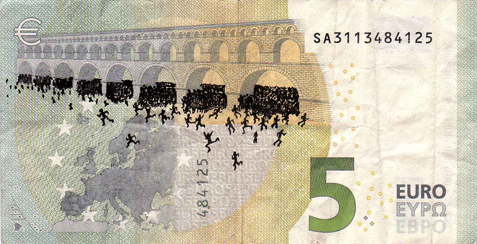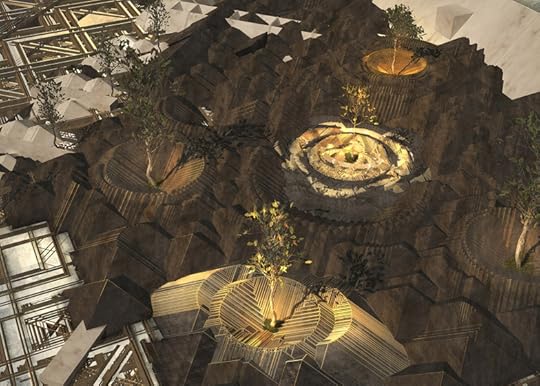Kill Screen Magazine's Blog, page 255
July 3, 2015
Soft Body's teaser trailer is a meditative music video in search of a game
How many videogames could just as easily be Bon Iver or Sigur Rós music videos? Ten percent? Fifteen?
In the spirit of that question, here is the trailer for Soft Body, which, in addition to being the fashion thinkpiece term of art for yours truly, is apparently “an action-puzzle game set in a meditative, musical world”:
Soft Body is what happens when bits of every arcade game you have ever loved escape the zoo and join forces to form a chilly synth-pop band. Snakes slither around a series of abstract obstacles, no longer constrained by the hard boxes of early cellphone games. Who knows to whence are they slithering? They’re just feeling it maaaaaaan.
They’re just feeling it maaaaaaan
Fair enough. Soft Body is an inverted game: the snake does not seek to free itself through gameplay, but rather creates barriers and constraints as it navigates the gameworld. “You paint the world with your SOFT BODY,” explains the teaser trailer, which makes free play sound a bit more slippery than it should.
The idea is nevertheless appealing. To an extent, all gameplay is the act of building the universe you want to inhabit. Soft Body is simply more explicit about this. As such, if its trailer appears to be more of a music video, that is a feature and not a bug. Soft Body encourages you to “meditate in bullet heaven,” which sounds less pleasant than it looks. Wandering through abstract universes as synth-y music thrums is meditation; Soft Body will turn it into gameplay.
Soft Body will be heading to PC, PlayStation 4, and PlayStation Vita this fall. Find out more about Soft Body on its website.
The shiny, pricy world of Batman: Arkham Knight
So, the Kid A thing was a joke. Behold our (belated) Arkham Knight review.
July 2, 2015
Greek artist draws on Euros to send a message about his country's plight
This, it is fair to say, is not how the European project was supposed to work out. At this very moment, German citizens can walk up to an ATM and withdraw their daily limit. At this very moment, Greek citizens can wait in line near an ATM in the hopes of eventually withdrawing their government-limited 60 Euro daily allocation. (On the bright side, Business Insider observes, "Greece isn't panicking about capital controls because millions of people are already too poor for it to matter.") The only thing Europeans at banks in Athens and Berlin have in common is an infinitesimal chance of receiving a work of art drawn on a banknote.

These drawings are the work of a Greek artist who goes by the name of Stefanos. Many of his illustrations show tiny characters hanging from and falling off the bridges on Euro banknotes. “I always use black ink ball-pen and draw human figures using headlines from the media, whenever violence or poverty is reported, I transfer the message on the medium,” Stefanos told the London Review of Books’ Scott Anthony. One of his banknotes is filled with tiny figures storming into the foreground through brick archways. It’s not entirely clear where they’re going but the watermarked continent is underfoot. The revolution is nigh. “I’m using a European document, that is in cross-border circulation, to bomb public property from the comfort of my home,” Stefanos informed Anthony.
"Spock" your $5 bills for Leonard Nimoy pic.twitter.com/bKdKyC3l4q
— Brand/Design Canada (@The_CDR) February 27, 2015
The beauty of “banknote hacking” is that the end result often remains legal tender. In March, the death of Nimoy was greeted by a call to action from The Canadian Design Resource urging Canadians to “Spock” their five-dollar bills. Raised eyebrows and an advanced hairline were drawn onto Sir Wilfrid Laurier and the result was both Spock and a five-dollar bill. More radically, as part of her “My Money, My Currency” project, artist Hanna von Goeler has painted her concerns about money onto American dollar bills.
realign the face of the Euro with the lived reality of Greece.
Fiat currencies like the Euro are mainly ideas. They do not represent fractional claims on tangible goods. Instead, they function because people believe in the promise they represent. As such, the artwork on banknotes plays an important role in creating the impression that we are all part of a shared community of interest. “Euro banknotes needed to be acceptable to everyone in the euro area,” the European Central Bank explains in its history of the currency.

To wit, in 1994 an ECB working group came up with eighteen generically European themes for banknote designs including “Abstract theme and security” and “Aspects of Europe (things vital to the existence of a united Europe, e.g, communications).” Mercifully artists were only asked to propose notes for two themes “Architectural ages and styles of Europe”, “Abstract-modern design.” It was ultimately decided that Euro banknotes would feature bridges that represent different architectural periods in European history. The bridges had to be fictional to avoid slighting the architecture of Eurozone nations; there just weren’t enough banknotes to keep everyone happy.
Much as a fiat currency fails when its holders lose faith in its underlying promises, the symbols on a banknote fail when they cease to have any relationship—even a metaphorical one—with the facts on the ground. Stefanos’ hacked banknotes attempt to realign the face of the Euro with the lived reality of Greece. Sure, this reality isn’t shared by everyone within the Eurozone, and that is a big problem, but the beauty of sending a message on currency is that the shipping is free.
Cats, the internet, and you
A recent influx of videogame cats begs the question: Why do we love these little assholes?
Clickhole's parody newsgame simulates the gay love fest of ancient Roman battles
You are a seasoned Roman general in the year 31 AD. Your biceps and eight-pack glisten in the sunlight as the gods smile down upon you and promise bloody victory. Only you and your army stand between the Germanic invaders and your beautiful Roma. So you reach for your battle axe, grab a statue of Romulus and Remus suckling at their wolf-mother's teat, and kiss your boyfriend, Antonius, hard on the lips.

With Fight For The Glory Of Rome!, parody site Clickhole satirizes the attempts at a 'choose your own newsgame,' which many like the BBC have tried to use toward more serious ends. While debates over the marriage between news media and interactivity rage on, one thing remains pretty certain: choose your own adventure newsgames tend to lack a certain... weight when recreating the horrifying realities of something like an unwanted pregnancy. Buzzfeed tries to offset the self-seriousness of the choose your own newsgame in its very own Buzzfeed way, with thrillers such as Can You Survive A Day In The Life Of A House Cat? and Can You Survive This Party As An Introvert?.

But with Fight For The Glory Of Rome!, Clickhole outshines the competition in blinding brilliance. I'm not sure how or why, but it appears Clickhole is one of the only content creators—parody or not—who understand what this bastardized version of a classic videogame genre needs to actually work. Because the key to the choose your own adventure newsgames lies neither in an emotional draw (which is what BBC relies on) nor narcissism (which is what Buzzfeed typically relies on). The heart of the choose your own adventure newsgame lies in immediate and visible consequences to your actions. And, boy, does Fight For The Glory Of Rome deliver on that front in the most delightfully spectacular ways.

For example if the player bristles at the fact that your character turns out to be gay, the game gives you the option to demand a sexy female wife; even though, as FGoR! insists, "this Roman adventure is just as good whether you're gay or straight. It's a thrilling tale of blood and conquest, and your sexuality is completely beside the point." Still want that sexified lady-wife? Well, the game presents you with a middlefinger fail screen and text that reads: "Go fuck yourself, you bigoted fuck. Game over. You lose." While those seem like some harsh words, they ring with a sort of sweet truth. Just imagine the people insisting on a lady-wife in FGoR! are the same people who argue that all-white high fantasy is "historically accurate."
the love between a man and a man is presented as the furthest thing from ridiculous
Though FGoR! was published before Pride month and last Friday's historic supreme court decision, Clickhole's approach to the well-documented homosexuality of ancient Roman armies reads as sincere and from a place of love rather than mockery. Of course, ridiculous things always happen around the relationship. But the love between a man and a man is presented as the furthest thing from ridiculous, especially in a world with intervening gods and random scuffles with squirrels. As the player, you are made a better general by having your love and second in command, Antonius, by your side. He frequently helps you defeat foes, in otherwise impossible battles.

FGoR! shines in everything it sets out to do. As a satire of the choose your own newsgame pseudo-genre, it often leaves the player with cumbersome blocks of information dumps. As a choose your own text adventure, this is a pretty exciting and robust narrative system, all things considered—I mean, at certain times, it even requires checkpoints (which obviously come in the form of impassioned kisses between you and Antonius!). But above all, as a hybrid war epic-bromance-rom-com, this genre-bending tale will engage all walks of people with all sorts of interests.
You can play the 'clickventure' Fight For The Glory Of Rome! for free on your browser.
Mulaka, Never Alone, and videogames as cultural agents
Games can keep history alive.
Architecture for atheists acknowledges the infinite detail of the universe
How do you build a church for an atheist? Who or what, exactly, would an atheist be looking to worship at a church made for them? These are null questions as, by definition, an atheist has no need for a church, at least not for prayer and sermons. It's a shame, really, as while the routine of Sunday service being voided may be a boon, it means that the special relationship between place and person is harder to come by.
I don't classify myself as an atheist as I eschew all prescriptive labelling (yeah, yeah, how "hipster" of me), but others certainly would, as I don't believe in God. However, I love the idea of worship and faith, and I love the architecture that the rich history of religion has built for itself. There's a church nearby me, just down the road, that I adore as it leans on the grass, the salty sea winds crashing against its spire. And at night, when its bell rings out, and I'm wearing my big coat as I walk past, it's as if it's calling out for an intimate gothic experience with me (I've probably played too much Bloodborne). Even without that, churches and mosques are built to impress their idols with large-scale art that stretches towards the skies and the upper tiers of expense. There's a lot to admire at an aesthetic level alone.

The fact that atheists are somewhat disconnected from these structures is something that Bartlett School of Architecture student Kacper Chmielewski has looked to address with his project "Atheistic Architecture." It is as it says: a series of architecture meant to inspire awe that makes no references to religion. Instead, in one piece, the oak tree becomes an icon for admiration, it nested in a harsh criss-cross pattern of soil pyramids, a golden light aglow at its roots. Surrounding these is a city comprised of ever-evolving geometric complexity that, instead of bowing to the radiance of a cosmic figure, acknowledges the scale of the material world.
"Why should religious people have the most beautiful buildings in the land?"
Chmielewski said to Dezeen that his drawings burst out of the sense of nostalgia he feels for religious architecture. "This project is a response accommodating both the discourse between nostalgia for ecclesiastical beauty and the rejection of fallen religious doctrine," he says. Here, he refers to his prediction that by 2040 only one percent of Britain's population will belong to the Anglican Church. He imagines dense superstructures that serve the majority in this would-be future—drawing from the space between brutalism and Cubist architecture—a mega city meant for atheists. It's not as sci-fi as it might sound.
He also reflects upon the fact that many of Britain's churches are becoming spaces for commercial endeavor rather than worship, which he believes is a waste. Chmielewski would rather see them reshaped to serve atheists as a place where they can "submerse themselves in a moment of solitude, feel a part of something greater, or perhaps connect with nature and the universe." That's what this is all about.

As Dezeen notes, Chmielewski's work builds upon the ideas proposed by philosopher and writer Alain de Botton. With his 2012 book "Religion for Atheists," de Botton looked toward usurping the useful practices of religion and applying them to healthy atheist living. Part of this was giving non-believers something impressive for them to look up to. "Why should religious people have the most beautiful buildings in the land?" de Botton asked. "It's time atheists had their own versions of the great churches and cathedrals."
And so de Botton planned for a series of temples meant specifically for atheists to be built around the UK, with the first being a 46-meter tall black tower, poking out of London like an imported evil from Middle-earth. De Botton's tower was meant to invoke the idea of perspective, reminding us of our relative insignificance against the large-scale of the world and outer space. Chmielewski's architecture is similar but more complex, both in what it represents and how it conveys it, and it is also more hostile, with him describing it as a typology that's "waging war with the previous system of values."
h/t Dezeen
The demonic properties of an ampersand
The classic roguelike NetHack has a surprisingly complicated portrayal of evil.
July 1, 2015
How sheep surveillance became a new online game
Google street view makes a game out of sheep hunting
Our collective fandom knows no bounds
Making a game out of sheep spotting
Google Maps is transforming the way we play I spy
"Backseats in Videogames" finds the serene beauty of racing games
Racing up front, beautiful road trips in the back.
Kill Screen Magazine's Blog
- Kill Screen Magazine's profile
- 4 followers



